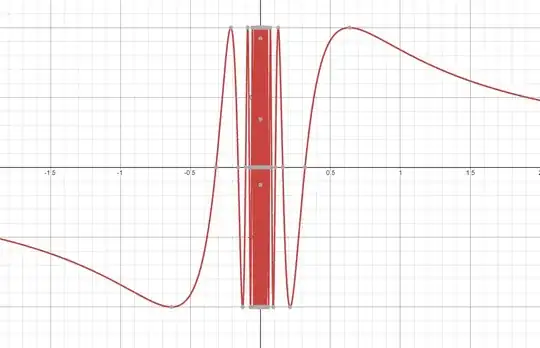Lets look at $sin(\frac{1}{x}) $ function,

Now you can get a idea how it behaves near to 0. That is oscillating near 0. THat's why we can't get limit when x goes to 0 of $sin(\frac{1}{x}) $ function. So let's move into it's proof,
Have to prove $\lim_{x \to 0+} sin(\frac{1}{x})=Does \: not \: exist$
$$\forall \varepsilon >0 \; \exists \delta \; s.t \; 0< x < \delta \mapsto |sin\frac{1}{x}-L|<\varepsilon$$
Let $\varepsilon=\frac{1}{2}$,
$$0< x < \delta \mapsto |sin\frac{1}{x}-L|<\frac{1}{2}$$
Assume that, $$\lim_{x \to 0+} sin(\frac{1}{x})=L \; \in \mathbb{R}$$
Let $$x_{1}=\frac{1}{2n\pi+\frac{\pi}{2}} \; \; (n\in Z^{+})\; \; and \; \; x_{2}=\frac{1}{2n\pi+\frac{3\pi}{2} } \; \; (n\in Z^{+})$$
So we have to get range of n,
$$0<\frac{1}{2n\pi +\frac{3\pi}{2}} < \frac{1}{2n\pi+\frac{\pi}{2} }<\delta$$
$$\frac{1}{2n\pi+\frac{\pi}{2} }<\delta$$
So we get,
$$\frac{1}{2\pi\delta }-\frac{1}{4}<n\; \; (n\in Z^{+})$$
Now,
$$|sin(x_{1})-L|=|1-L|<\frac{1}{2}\Rightarrow \mathbf{C}$$
$$|sin(x_{2})-L|=|-1-L|=|1+L|<\frac{1}{2}\Rightarrow \mathbf{D}$$
By C + D we get,
$$|1-L|+|1+L|< 1$$
$$|(1-L)+(1+L)|\leq |1-L|+|1+L|< 1$$
$$2\leq |1-L|+|1+L|< 1$$
$$2<1 \; \;\; \; (\therefore contradiction)$$
Assumption is not true. $\: \: \therefore\:\lim_{x \to 0+} sin(\frac{1}{x})$ has no limit.

